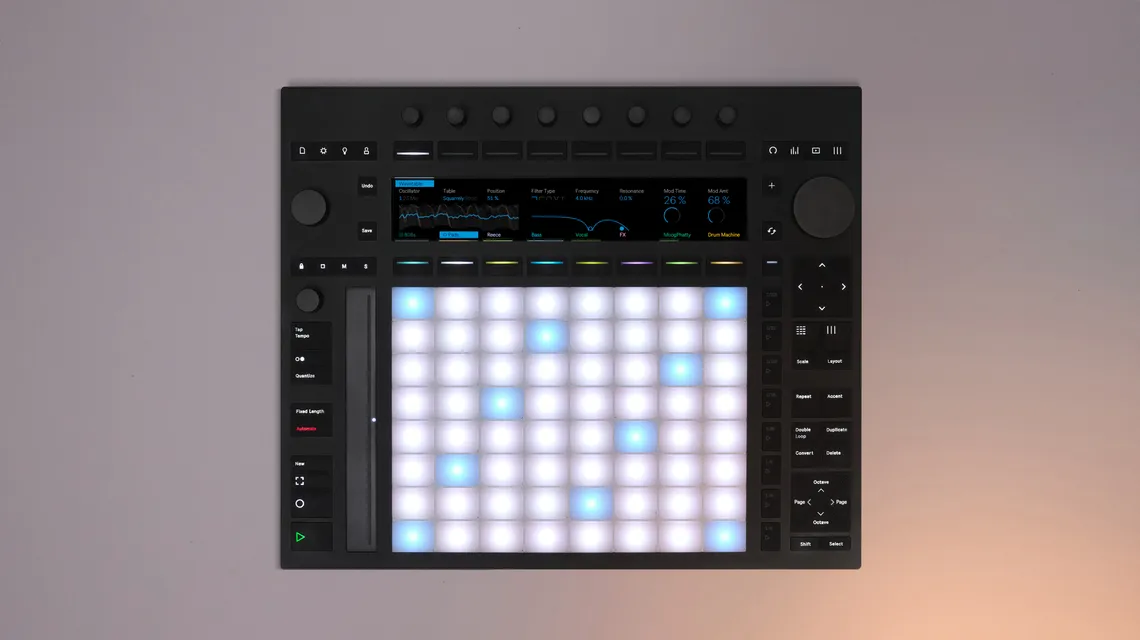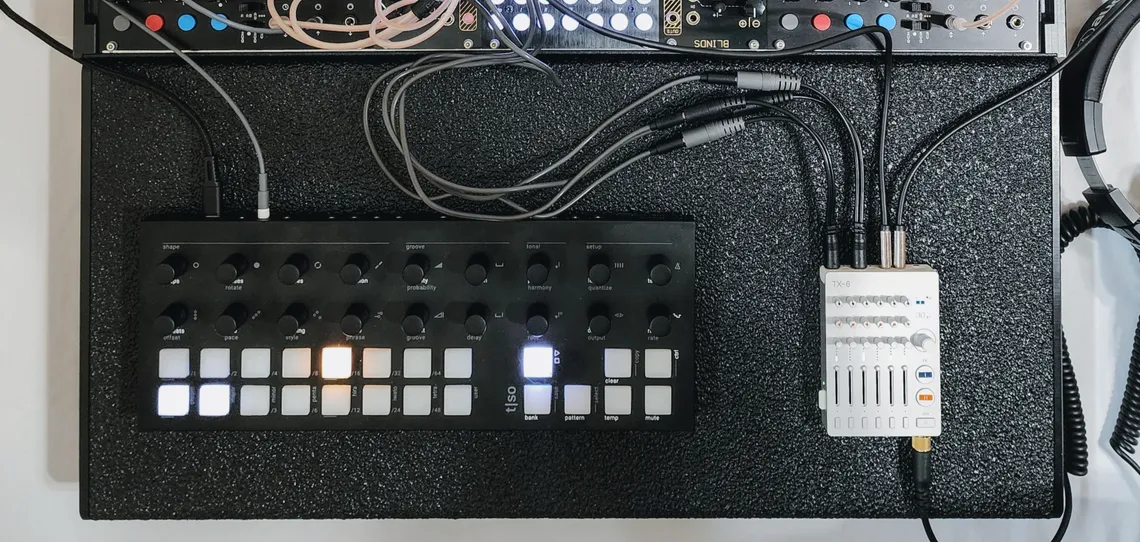The Morphagene module, produced by Make Noise, is a versatile and powerful tool for sound manipulation and granular synthesis. This Eurorack module allows users to record, splice, and rearrange audio in real-time, making it an excellent choice for creative sampling and slicing. In this article, we'll explore how to use Morphagene's reels to slice breaks for drum and bass and sequence them back together, resulting in innovative and unique rhythms.
Understanding Morphagene's reels
Morphagene's reels are the heart of the module, serving as virtual tape loops for audio storage and manipulation. Each reel can hold up to 2.9 minutes of audio, which can be sliced into smaller segments, or "splices," for further manipulation. Morphagene's granular synthesis capabilities allow users to experiment with audio playback, pitch, and timbre for each splice.
Slicing breaks
To prepare slices using the Morphagene, follow these steps:
- Load a sample: Begin by loading a sample into Morphagene's reel. You can either record the sample directly into the module or use a pre-recorded sample saved on an SD card. For best results, choose a high-quality sample with distinct drum hits.
- Create splices: Morphagene offers two ways to create splices: manually or automatically. To create splices manually, use the "Splice" button to mark the start and end points of each drum hit. To create splices automatically, use the "Gene Size" and "Slide" controls to set the desired splice length and the amount of overlap between splices.
- Adjust splice settings: Once your sample is sliced, use the "Gene Size" control to adjust the size of each splice. Smaller gene sizes result in more granular and glitchy sounds, while larger gene sizes produce more traditional and rhythmic patterns. The "Slide" control determines the playback position within each splice, allowing for additional manipulation and variation.
Sequencing splices
After slicing your sample, the next step is to sequence the splices to create new rhythms and patterns. Follow these steps to sequence your splices:
- Connect a sequencer: Connect an external sequencer or clock source to the Morphagene's "1V/Oct" and "Varispeed" inputs. This will allow you to control the playback order and speed of your splices.
- Program your sequence: Program a sequence on your external sequencer, using CV signals to control the order and speed of the splices. You can create intricate and evolving patterns by modulating the "1V/Oct" and "Varispeed" inputs with various CV sources, such as LFOs or envelopes.
- Monitor the output: Listen to the output of your Morphagene module while your sequence plays. Experiment with different settings and sequences to find the perfect blend of rhythm and texture.
How YourOpponent uses the Morphagene
During Piqued 43 Korey asks YourOpponent about how he integrated Morphagene into his set and specifically how he used it for drum and bass.
One of the things I wanted to do was to do drum and bass and jungle, like I grew up on that stuff in the 90s. So, I love it, but I also love sequencing it. I was trying to figure out in the modular world how I could do it, and I don't see too much drum and bass being done. I like randomness and probability, so there's just a whole bunch of sequencers going into the Morphagene. The reels were pre-made, and markers picked, and stuff was created in Ableton, then sequenced.
So, how many reels did you pre-make for Morphagene?
I made four reels for this show today. It was incremental steps on how I built them. I had old drum and bass songs that I made, so I sliced those up and experimented with sequencing. The Arpitecht and the Bloom are just firing notes at the Morphagene, which gives the randomness and scattered, really crazy breaks.
How is Bloom interacting with that?
The Bloom is interacting with the Arpitecht, and it's doing a division of the clock. Bloom is a fractal sequencer that can mutate. It mutates the rhythm, which determines how the Arpitecht plays the arpeggio, and it also mutates the scale. The scale determines the notes, and the notes determine what sample is going to fire and play.
Watch the full interview below:
More tips from YourOpponent
We followed up after the show and YourOpponent had even more tips to share. His initial approach was to create a series of reels through trial and error. His first experiment involved using Reaper to slice an Amen break beat into individual hits because, unlike Reaper, Ableton lacks the marker functionality necessary for this task. However, jamming with these individual hits didn't quite hit the mark musically, prompting a reassessment of the approach.
After several iterations, YourOpponent found that slicing at the level of bars, rather than individual hits, yielded a more fluid and coherent sound that aligned closer to his musical vision. This approach also helped maintain a more consistent groove, a crucial aspect of drum and bass. Throughout these stages of experimentation, YourOpponent documented his progress by streaming live sessions on Twitch under the title, "Tiny Couch Sessions".
Uniformity in slice lengths was another strategy he found beneficial. When slices were of different lengths, it could cause a shift in the beat upon triggering a sample, disrupting the groove. While such an effect might be interesting in certain musical contexts, it wasn't the desired outcome in this case.
In the end, YourOpponent's final reels consisted of approximately 130 slices each, composed of both samples and custom drum sequences with bass. This method revealed another level of control and creativity, allowing him to organize and dial in different moods or variations based on the position of the Organize control. For instance, he could set a mellow intro at 3 o’clock, breakdowns at 12 o'clock, and more intense sections at 9 o’clock.
Beyond just slicing and organizing, the Morphagene's features also shone in live performances. The smooth, non-stepped pitch slides, the variable reverse feature, and the ability to manipulate gene size and offset can dramatically transform beats, while always offering the reassurance that one can reset to a 'normal' playback.
YourOpponent's setup was running the latest firmware and was configured to ensure that one sample finished before another began. While this approach worked for him, it might not be the best fit for everyone. Nonetheless, his journey offers a solid foundation for anyone looking to explore drum and bass music with the Morphagene.
Get slicing
Morphagene's reels are a powerful tool for slicing samples and sequencing them back together. By harnessing the module's granular synthesis capabilities and integrating it with external sequencers, users can create a wide range of complex and evolving rhythms. Whether you're an experienced modular synthesist or new to the world of Eurorack, Morphagene offers endless possibilities for innovative sound design and sample manipulation.
Links:
https://www.makenoisemusic.com/modules/morphagene
https://piqued.fm/piqued-43-youropponent-density-time-and-dr-rek/
https://www.twitch.tv/youropponent0





